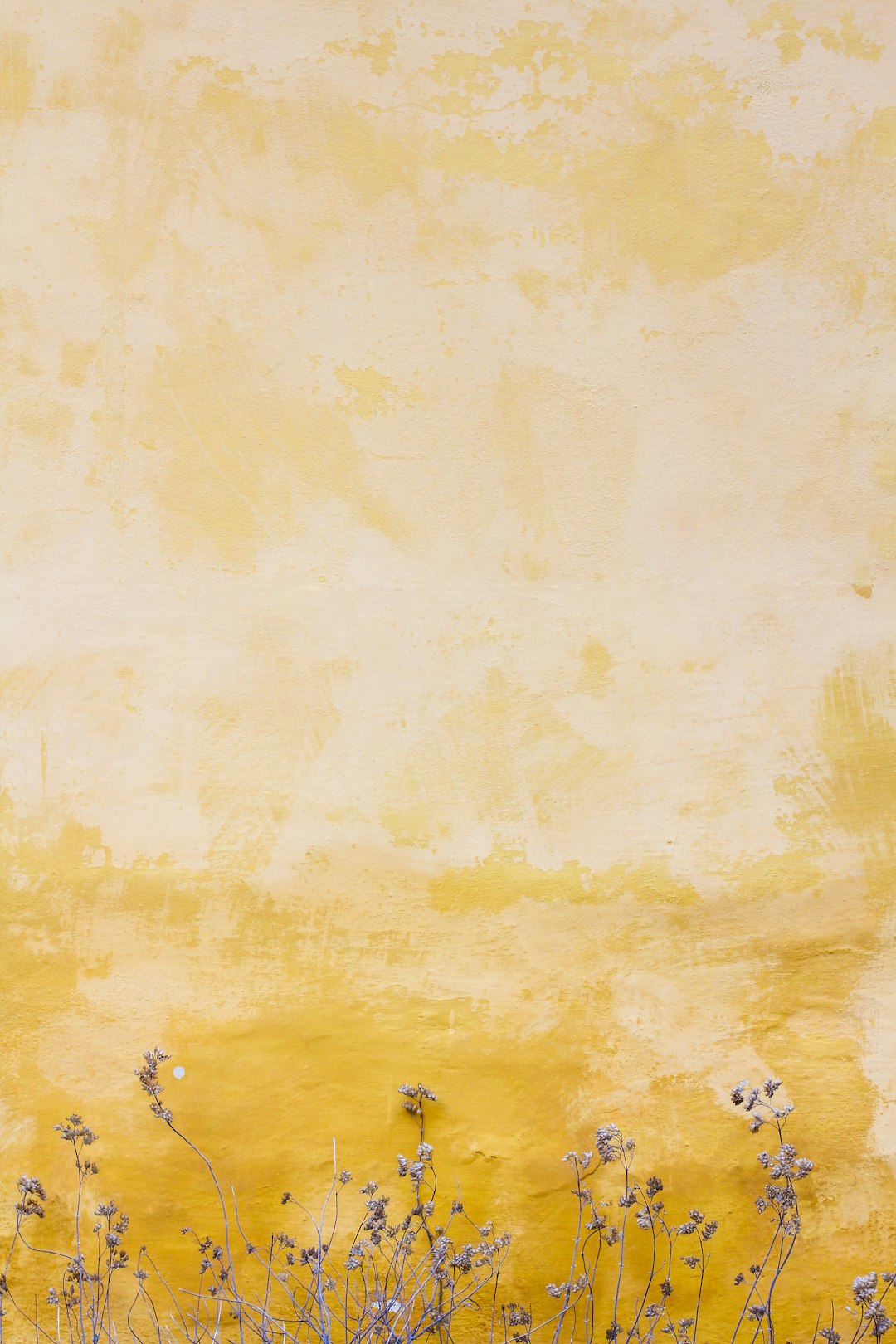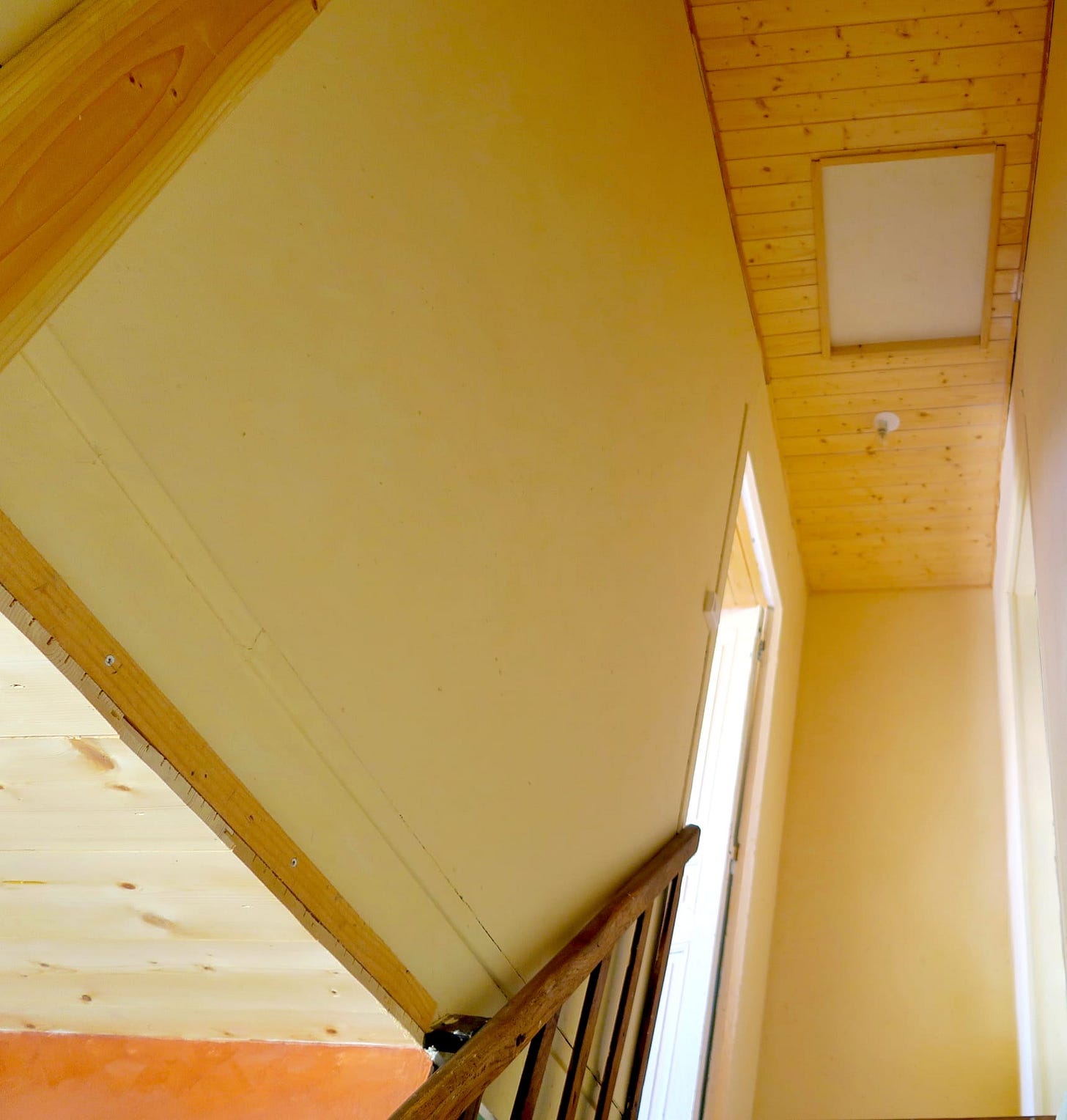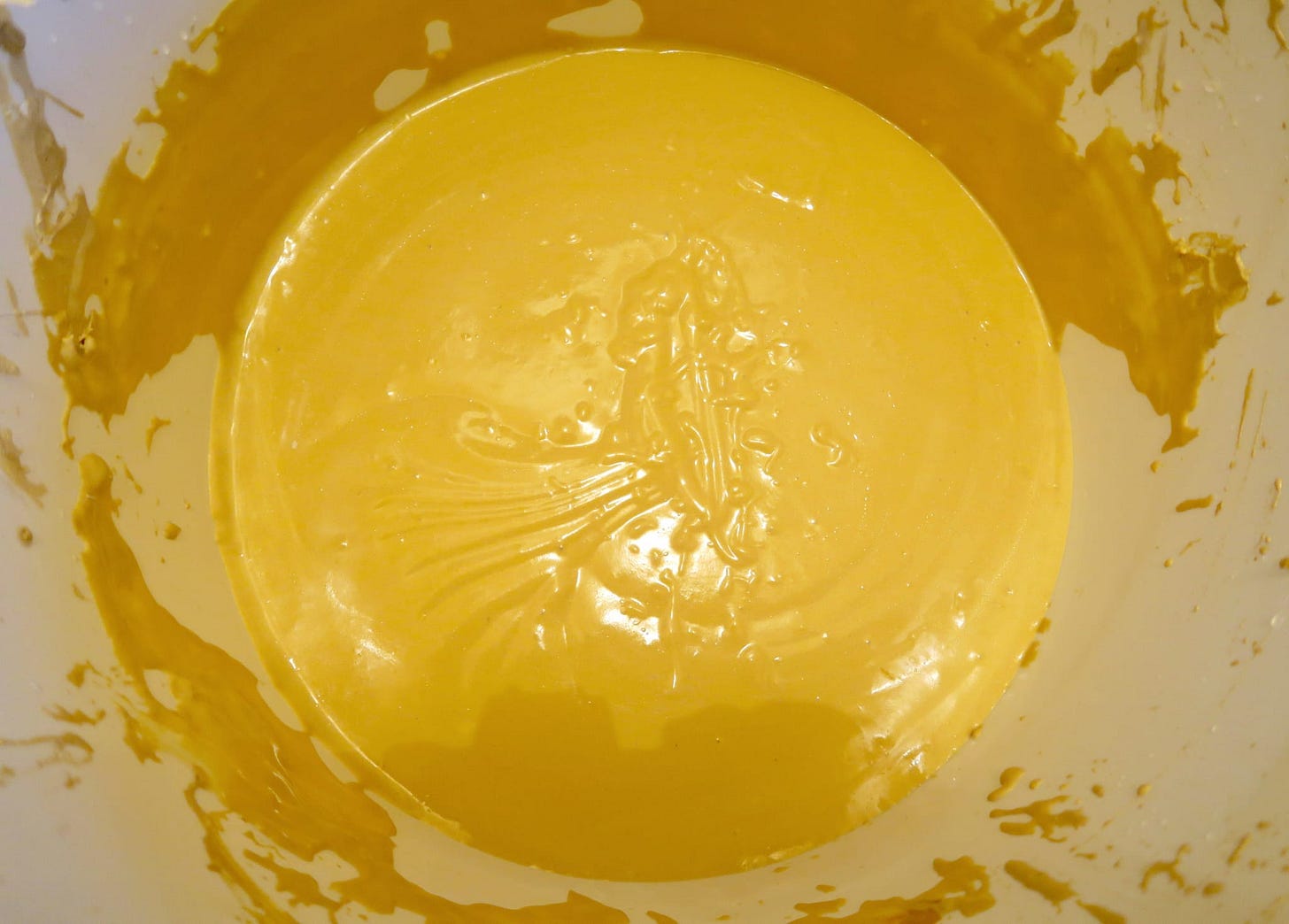How to make natural wall paint
from... potatoes (yep). Because your average decorating paint is pretty toxic + my 6 year-long life "cleanse"
This essay is part of the You Can Do This series where I share empowering and practical how to guides that will hopefully help you acquire a new lifelong skill.
Hello! This is Leyla from A Day Well Spent, a newsletter seeking pathways to more purposeful living.
Here’s what most recently landed in subscriber inboxes:
Answering where does time go and why is it always in a rush to leave with how to slow down the passing of time
Setting our New Moon intentions for this lunar month — the New Moon is today so there’s still time to do this
The 30 affirmations I say out loud, it’s these ones I write out and recite the most
If you’re reading this by chance — welcome! You can enter your email below to ensure you never miss my posts (most Thursdays and Sundays).
My 6 year-long (and counting) life “cleanse”
I am on, what I would loosely call, a life “cleanse” and have been for almost six years. It’s an ongoing process that all started with Marie Kondo’ing the entirety of my worldly possessions in the summer of 2018, after reading Marie’s book The Life-Changing Magic of Tidying Up: The Japanese Art of Decluttering and Organizing.
That book really did change my life because after applying its principles (‘get rid of items that no longer have a purpose or no longer "spark joy", only keep things that are purposeful and meaningful’) to all of my stuff (it's a rigid method that took me several months to complete thoroughly), I found I was subjecting any new thing entering my world to the same scrutiny.
Will this bring me joy? Does this hold beauty? Will this benefit my wellbeing? Has this been made via ecological methods? And so on.
This means it takes me absolutely ages to part with my money because of the silly amounts of research I do prior to purchasing any new thing — I explain this in why I really, really don’t like shopping.
This getting rid of the accumulated detritus of just being and basking in the simplicity of what is pure and what is less, started to permeate into all the other aspects of my life. From the cleaning products and skincare I use, to the food I eat (if you’re looking for an excellent homemade granola recipe to replace all that ultra-processed cereal, look no further) and homeware I buy, to everything else.
So when I stumbled upon an article from the author of today’s guest post about cooking up your own natural decorating paints, my immediate reaction was: this is very cool and I can cleanse my DIY endeavours too!
What’s wrong with regular wall paint?
Your average industrially produced decorating paint contains toxic Volatile Organic Compounds or VOCs. The fact you need something as chemically potent as white spirit or paint stripper to remove the stuff gives a sense as to what this kind of paint is made of.
These regular paints give off low level toxic fumes that can cause breathing irritations and headaches; painted surfaces can continue 'off gassing' fumes for months after painting.
You can buy low VOC paints, which are better. But if you want to avoid fumes altogether, look for paints that contain all-natural ingredients, which is what I currently do (where you just need soap and water to clean your brushes - imagine!).
They cost a bit extra but are worth it if you have allergies, vulnerable house members (children, elderly) or simply don’t want this stuff in your system.
*raises hand*
Or in the spirit of the power of self-reliance, doing more for ourselves and learning a new skill, you could have a go at making the paint yourself.
If you like the sound of that, you might like my other accessible, self-empowering and practical how to guides anyone can do that make up the You Can Do This series.
I’m totally going to try this.
A huge thank you to the author of today’s guest post, Anne-Sophie, for generously sharing with us how to do just that. She’s included her favourite tried and tested paint recipe and process images as well as all the practical tips you need to cook up a beautiful natural paint from… potatoes.
Anne-Sophie is a permaculture designer living in France’s mid-mountains and has a passion for making permaculture accessible, actionable and applicable to our inner landscapes. You can find most of her work at Radicule Design where she’s also created a natural paint making video course, should you need a helping hand (more on that below).
As always, thank you for being here and I hope you enjoy today’s post.

How to make natural wall paint
A guest column by Anne-Sophie
It’s been years now since I discovered the topic but I still remember how excited I felt when first hearing the question: ‘And what about natural paints?’
‘What do you mean by natural paints?’
‘You know, paints you cook yourself made from very simple ingredients, such as flour.’
‘Sorry… what?!’
I bet you aren’t really sure what this is about. I must be kidding you, right?
Let’s take a step back and together, summon your vivid imagination.
Picture yourself in a Nordic country in the countryside on a sunny day. You hear sea birds, the smell of iodine tickling your nose, the wind gently sprinkling sea salt and spray on your hair, green and abundant grasses dance freely in the open.
Can you see that postcard house over there? The typical wooden red one? Any guesses what that very red paint is made of?
You guessed it: flour.
Not just flour, of course. There are some additional ingredients required to make the magic happen. Still, this Swedish paint is one of the many examples of natural paints that have been around for at least centuries and even millennia for some. They have been made and used in different traditions from different parts of the world for their beauty and also for their protective properties.
Nowadays, we use them to colour the inside walls of our homes because they are beautiful, they have a distinct natural, earthy and rustic look, are way cheaper than industrial paints and also way healthier — for ourselves and for the planet.
No dirty chemicals involved here. No air-water-soil pollutants lasting forever. So much so that you can cook and apply these with your kids — which makes for an even cheaper workforce (maybe not the most efficient though).
On top of that, you can cook most natural paints with your regular cooking equipment, then return that big old stew pot to its original role of cooking delicious beans, provided you thoroughly clean the whole thing.
By now, you should be very excited to learn more about these natural paints. Luckily for you, the rest of this article will show you how to cook some gorgeous... potato paint!
Why this type of natural paint? Because it’s one of the cheapest from the different recipes I have tried, it’s very easy to make, it smells good and it looks awesome.
And if you haven’t already anticipated it, there is also the pleasure of touring your guests around your home, hearing their praise for your beautifully painted walls and then unveiling the unbelievable truth: yeah, this paint is made from potatoes.
Let’s dive into how to make this wonderful paint.
How to make potato paint
Potato paint can be prepared directly from potatoes, which is the most ecological way. But if you’re feeling a bit lazy you can opt for ready to use potato starch; the latter makes the paint quite quick to prepare.
Ingredients1
Makes 2.5 litres (0.7 gallons) of potato paint
Covers 25-30m² (270-323 ft²)
Water
500g cooked potatoes or 125g potato starch
750g precipitated chalk aka calcium carbonate (found in any hardware store)
100g-150g natural pigments (more on these below)
1 tbsp flax oil
Cooking method






